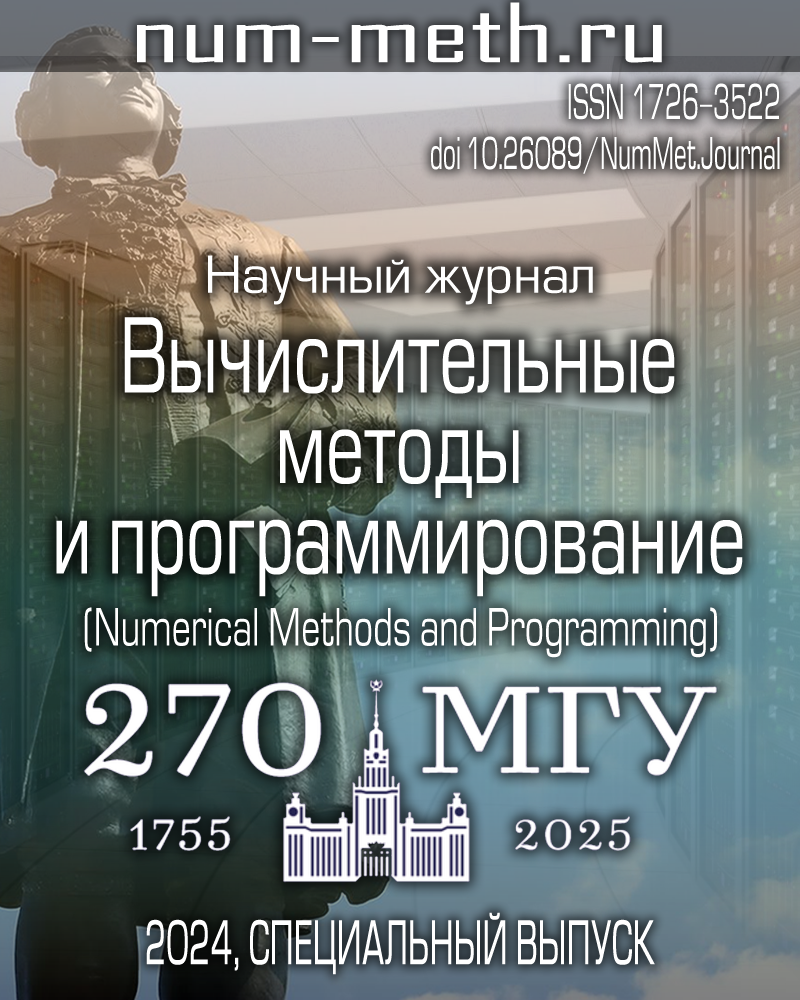О журнале
“Вычислительные методы и программирование” (“Numerical Methods and Programming”) – научно-исследовательский рецензируемый журнал, учредителем и издателем которого является Научно-исследовательский вычислительный центр Московского государственного университета им. М.В. Ломоносова (НИВЦ МГУ). Журнал публикует результаты новых научных, практических и теоретических исследований, полученных в области вычислительной математики, математического моделирования, программного обеспечения вычислительных машин, комплексов и сетей, а также их приложений.
Редакция журнала принимает к рассмотрению авторские материалы высокого качества, оформленные в виде оригинальной статьи или обзора. Новизна и научная значимость работы проверяются рецензентами и редакторами. Журнал выходит с периодичностью 4 выпуска в год. Публикация статей бесплатна. Статьи, опубликованные в журнале, находятся в открытом доступе для всех пользователей сети Интернет.
Журнал “Вычислительные методы и программирование” зарегистрирован в качестве научного электронного периодического издания Федеральной службой по надзору в сфере связи, информационных технологий и массовых коммуникаций (свидетельство о регистрации Эл № 77-4356 от 05.02.2001, ISSN 1726-3522).
Журнал включен в библиографическую базу данных RSCI (Russian Science Citation Index), входит в “Белый список” Российского центра научной информации, в ядро РИНЦ и в Общероссийский математический портал MathNet.Ru. Относится к категории К1 перечня ВАК ведущих рецензируемых научных изданий, рекомендованных для публикации основных результатов диссертаций на соискание ученых степеней кандидата и доктора наук по специальностям:
1.1.6. — Вычислительная математика (физико-математические науки),
1.2.2. — Математическое моделирование, численные методы и комплексы программ (физико-математические науки и технические науки),
2.3.5. — Математическое и программное обеспечение вычислительных систем, комплексов и компьютерных сетей (физико-математические науки и технические науки).
Библиографическая информация об опубликованных статьях помещается в базу данных научного цитирования РИНЦ.
Статьям, публикуемым в журнале, присваивается doi (c 2015 года).
Полные тексты всех статей журнала размещаются в pdf-формате в Научную электронную библиотеку РФ (elibrary.ru) для свободного доступа.

